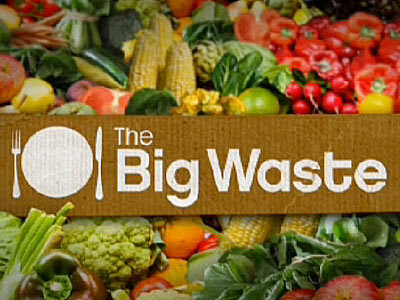Today, America is considered to be one of the most wasteful countries in the world, especially when it comes down to food. We, as Americans, spend close to $200 billion a year just on waste and obesity alone. Most American households dump anywhere between 20-25% of the food they buy each year. This adds to an alarming $43 billion a year that is, metaphorically speaking, just going down the drain! Not only do households waste alot of food, but grocery stores and restaurants do as well! It has been estimated that grocery stores and restaurants throw out over 35 million tons of food each year at an annual cost of $30 billion! And what's really sad is almost 12% of the food waste that are in our landfills (see image below) come from unharvested crops that were never picked due to there not being a high demand for the crop at the time.
With these wasteful habits taking a toll on our economy, something needs to be done! Even though there has been a gradual increase of food price (currently sitting at about 8%), maybe the food price should continue to increase until people realize that food is too precious to waste. Maybe there should be a limit put on the amount of food a farmer can grow or the amount of food grocery stores can have in stock at a time. While some states have implemented programs to encourage businesses to compost or serve smaller portions, it's not doing anything! The problem is only getting worse. People are still WASTING food!
There is NO reason, whatsoever, why so much food, that is perfectly edible, should continue to be dumped into our landfills considering that we have so many hungry children out there. We, in America, are at the point now where food donations have decreased by 9% while food banks demand for food has risen to 20%! But yet we are still throwing away billions of dollars worth of food each day? Restaurants and grocery stores could easily donate day old products or leftover chicken to many food banks. Many households could donate extra food that they might have leftover instead of throwing it out. The problem is, we choose not to. But whether we choose to stop the food waste in those two alternates or not, one factor still remains childhood hunger is still a major issue and it is crucial that we find an immediate solution to this problem! Because if we don't, God knows what type of problems we could run into in the future.











